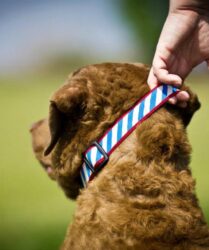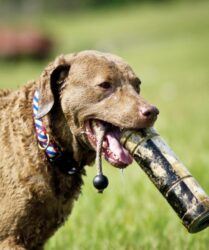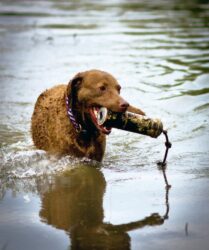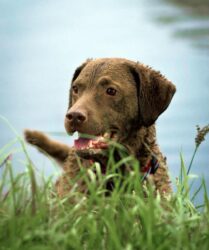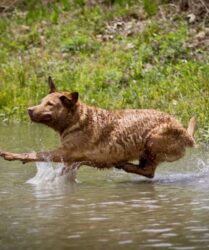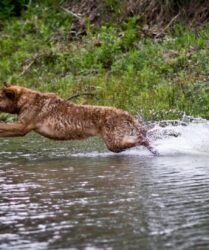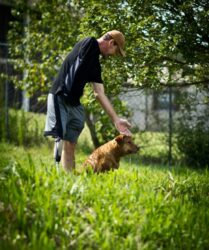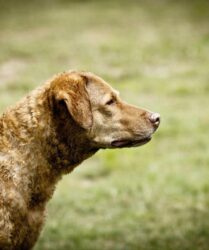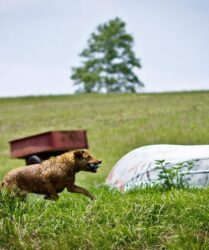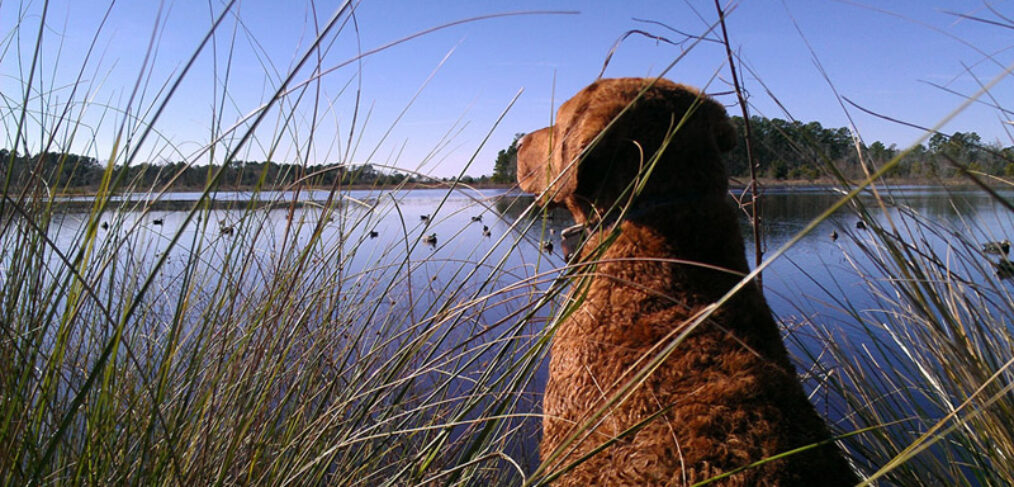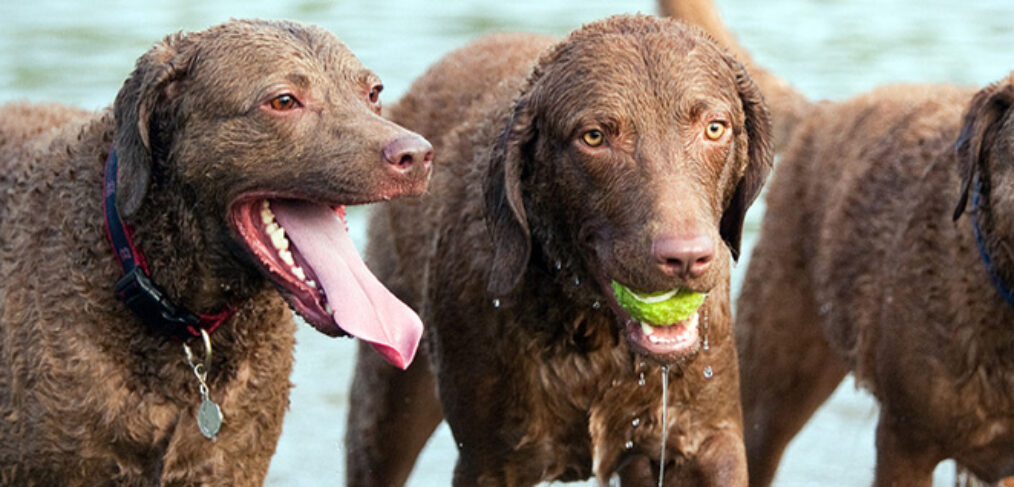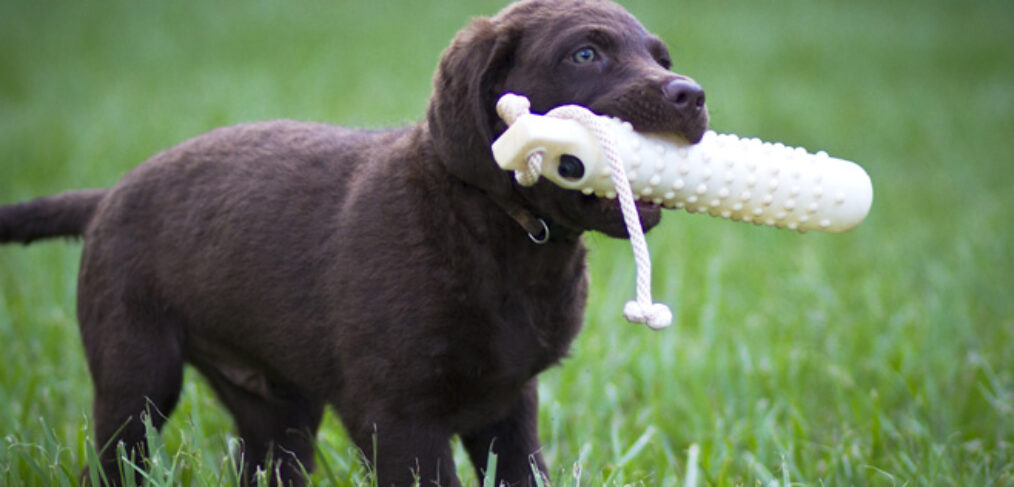The Chesapeake coat is double coated—that is, it has both a soft wooly undercoat and a coarser topcoat (outer coat).
Shedding
Many people ask me “Do Chesapeakes shed?” Yes, Chesapeakes shed and some shed a lot. If you’re looking for the next non-shedding, low maintenance dog then a Chesapeake is not for you.
Most Chesapeakes shed their undercoat twice a year and regrow it again as colder weather comes in; this is also referred to as blowing coat. In many climates, the topcoat and undercoat might shed continuously in greater and smaller quantities all year.
The pattern in which a Chesapeake may shed its coat will vary from dog to dog. Some, will shed minimally but continuously; others, will shed in patches while others will go nearly bald all over.
To help the shedding process you can:
1. Give the dog warm baths to help remove the undercoat
2. Brush (I do this outside) with a Zoom Groom type brush
If your dog’s hair does not start growing back after a month or two, then the shedding might be caused by nutrition or some underlying medical issue. Nutrition plays a big part in coat and each dog is different. For example, my oldest girl goes nearly bald (sheds much more) when she eats ProPlan dog food. However, my youngest does very well on it. A common medical issue in Chessies, thyroidism, can also cause hairloss.
Colors
There are three basic colors in the breed Brown, Sedge and Deadgrass. Brown, is from a very light, silvered brown to a rich deep dark bittersweet chocolate. Sedge is from a reddish yellow through varying chestnut shades to a bright red. Deadgrass varies from faded tan to a dull straw color. The difference between Sedge and Deadgrass is that Deadgrass contain no significant amount of red, while Sedge does.
Some Chesapeakes have varying degrees of other markings such as: masking on topskull, brindling (a striping effect of light & dark through the body and on the legs), distinct & indistinct saddle markings, agouti coloring and tan points. All are acceptable, but are not preferred, and should not be disqualified in the conformation ring.
There are two color disqualifications in the breed: black coloring and white on any part of the body except breast, belly, toes or back of feet. White which extends above the point of the sternum, whether connected or unconnected to white below, is a disqualifying location. Premature graying does occur in Chesapeakes and should not be cause for disqualification. White is also allowed on the toes and on the back of the feet. Legal white can also occur on the sheath of the penis. The preputial region is a subregion of the pubic portion of the abdomen, in common terms belly.

